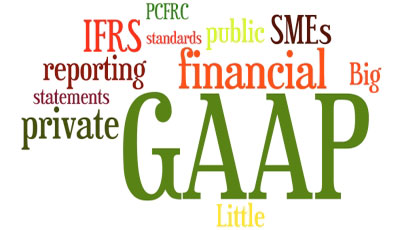Mind the Non-GAAP

Nontraditional financial metrics can shed valuable light on a company’s operations – or obscure its true condition.
Normalized adjusted EBITDA less capex. Adjusted consolidated segment operating income. Adjusted EBITDA (as adjusted). Even enthusiasts of non-GAAP metrics have to admit that such measures often sound just a wee bit ridiculous.
Non-GAAP metrics, those not addressed in U.S. generally accepted accounting principles, are as controversial as ever. A small number of such measures, like EBITDA and free cash flow, have gained widespread acceptance in the investor community. But regulators often give companies flak for the way they use non-GAAP measures in public filings, press releases and other communications consumed by investors and analysts.
Groupon, the perpetrator of “adjusted consolidated segment operating income” (ASCOI), took heat from the Securities & Exchange Commission in 2012 because the metric excluded online marketing expenses, a critical part of the firm’s business model, from company performance. Groupon eventually dropped the metric from its initial public offering filing, but it absorbed further criticism for its post-IPO use of other non-GAAP measures.
Black Box, a telecommunications company, got some bad press in January 2013, when it included the metric “adjusted EBITDA (as adjusted)” in its quarterly earnings release. The metric subtracted from net income ordinary expenses such as a $2.7 million loss on a joint venture, creating EBITDA (as adjusted), then further excluded stock-based compensation expenses to create the final, rather silly-sounding redundancy. Black Box said the measure demonstrated its ability to service its debt. Others thought it made the company look like well, a black box.
A common opinion is simply that non-GAAP metrics are misleading to shareholders. “They may be perfectly understandable to accountants who know what that company is doing but confusing to others,” says Michele Amato, partner at accounting firm Friedman LLP. Indeed, the SEC has long subjected companies that use non-GAAP metrics to heightened scrutiny, and the chairman of the commission’s new accounting-fraud task force has vowed to keep up the pressure.
But companies that use these black-sheep metrics argue that they often depict financial performance more accurately than GAAP measures and afford investors a window to how management sees things.
Public companies are allowed to disclose non-GAAP metrics in their SEC filings, press releases and earnings calls, subject to certain rules. Under Regulation G, mandated by the Sarbanes-Oxley Act, use of a non-GAAP financial measure must be accompanied by the most directly comparable GAAP measure and a reconciliation of the two metrics.
Everything in Moderation
For her part, Amato says there’s a place for non-GAAP metrics. “A very significant variance between GAAP and non-GAAP metrics that management uses as a baseline for internal financial analysis might be of some use,” she says.
There is nothing wrong with using a non-GAAP metric to provide an additional perspective about something very germane to the company’s performance, like its valuation, credit standing or working-capital management, that can’t be communicated well through GAAP metrics alone, says Robert Rostan, CFO and principal at financial training firm Training the Street.
As an example, he points at companies that sell a lot of gift cards, which ties up capital until the gift cards are used. “We should take that into consideration when we’re talking about working-capital cycles and receivable cycles and the like, in terms of when cash goes out and comes in,” Rostan says. “If you think there’s a different way to look at something, why not steer the user toward it?”
Well, there are a number of reasons why not, as Rostan himself knows. When misused, non-GAAP measures can erode a company’s credibility.
In a previous job for Rostan, as a financial-planning director for a retailer, the company had numerous properties in an area that was beset by tornadoes, violet thunderstorms and hail almost every spring. For two years in a row the company, which happened to be self-insured, spotlighted a non-GAAP metric that excluded hail damage from its second-quarter earnings. “Is that really a one-time item that you should take out when talking to analysts?” he says. “It’s like what Groupon did: here’s our profit before all the bad stuff.”
Some say companies shouldn’t use non-GAAP measures at all. For one, Anthony Catanach, a professor at Villanova University and a fellow at American College, has long railed against the practice on his blog, “Grumpy Old Accountants.”
Catanach acknowledges that GAAP is flawed but says non-GAAP metrics are disingenuous. “What disturbs me is that adjusting GAAP underestimates the intelligence of institutional investors,” he says. “Are you telling me that good research analysts can’t subtract a couple of numbers from earnings? That they need to have managers do that for them?”
Non-GAAP metrics also may be a red flag, he says. “In my experience, companies that have strong earnings year after year, that have strong operating cash flows and are good at what they do, don’t report non-GAAP metrics. It’s only the ones where the business model is a bit suspect, and where the company’s marketing has gotten out in front of its performance.”
Finding a Middle Ground
CFOs can straddle the line by leaving non-GAAP metrics out of investor presentations and public filings but including the “building blocks” in their financial-statement disclosures so that investors can “do the calculations on their own,” Rostan says.
Catanach says CFOs who want to be more transparent and how they measure success could supplement financial metrics with non-financial ones, like new accounts opened or a breakdown of sales volume by corporate customers versus individuals. “Tell me something about your business model and how well it’s working,” he says.
Companies could also include measures that show how they are investing in the futur through employee training and education, for example. “Why are we focusing on a financial-statement number from which you subtract one or two amounts, when the universe is so wide open with so many other measurements that could really would help the investment community?” Catanach asks.
Non-GAAP metrics, if used at all, should be used sparingly, Amato advises. “The SEC is likely to write more comment letters to that company, which will have to spend more time providing answers,” she says.
A good yardstick: More than a couple non-GAAP metrics and you’re probably getting out of hand. “When you get carried away with deducting and adding back numerous line items, it loses all meaning,” Amato says.
Source: CFO




























